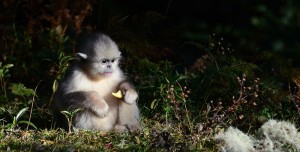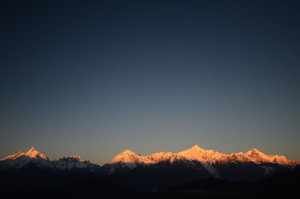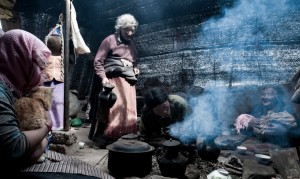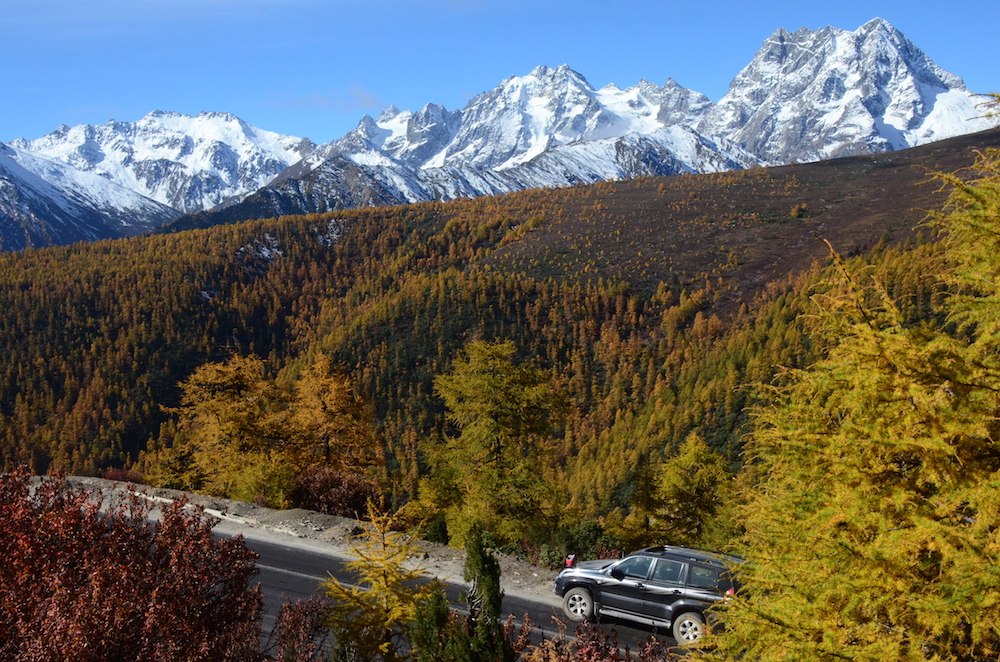| An immensely long time ago – 35 million years, give or take a few millennia – the Indian subcontinent crashed into Eurasia and created the Himalayas, the mountains effectively forming a vast, icy wall that divided Asia in two.

At their far eastern end, however, the chain peters out in a series of lush, forested valleys that carve their way south through Yunnan’s northwest corner. Here, plants, animals and people from both sides of the Himalayas have mingled, creating a genetic crossroads, a meeting place between ecosystems on the mountains’ leeward and windward sides. Thanks to a trick of geography, these few valleys enjoy “Goldilocks conditions”, just right for life to thrive. The result? A dramatic explosion of biological diversity seldom seen in the Earth’s temperate regions.
 Towering 30-metre tall rhododendrons turn the forests ruby red each spring; wild azaleas cover swaths of hillside; gorgeous golden pheasants rustle through the undergrowth, and snub-nosed monkeys dine on the lichen that thrives in the crisp air. Three of Asia’s major rivers (four if you count the headwaters of the Irrawaddy across the border in Burma) – the Yangtze, the Mekong and the Salween – flow alongside each other for a few hundred kilometres, through the epicentre of this diversity, the Three Parallel Valleys region.In the late nineteenth century, word of these remote cloud-forests filled with exotic new species piqued the interest of Western plant collectors. Between the 1890s and the 1950s, intrepid botanists scoured northwest Yunnan and the neighbouring regions of Burma and northeast India for new specimens. The results were staggering. Joseph Rock returned from a single expedition with 500 species of rhododendron. The appropriately named George Forrest collected an incredible 31,000 specimens over seven expeditions in Yunnan, and Frank Kingdon-Ward was still discovering new species even after half a century of energetic exploring. Towering 30-metre tall rhododendrons turn the forests ruby red each spring; wild azaleas cover swaths of hillside; gorgeous golden pheasants rustle through the undergrowth, and snub-nosed monkeys dine on the lichen that thrives in the crisp air. Three of Asia’s major rivers (four if you count the headwaters of the Irrawaddy across the border in Burma) – the Yangtze, the Mekong and the Salween – flow alongside each other for a few hundred kilometres, through the epicentre of this diversity, the Three Parallel Valleys region.In the late nineteenth century, word of these remote cloud-forests filled with exotic new species piqued the interest of Western plant collectors. Between the 1890s and the 1950s, intrepid botanists scoured northwest Yunnan and the neighbouring regions of Burma and northeast India for new specimens. The results were staggering. Joseph Rock returned from a single expedition with 500 species of rhododendron. The appropriately named George Forrest collected an incredible 31,000 specimens over seven expeditions in Yunnan, and Frank Kingdon-Ward was still discovering new species even after half a century of energetic exploring.
  While geography has limited the scale of human impact – until fifty years ago the only way to cross any of the major rivers was on a rattan rope slide greased with yak butter – eight of Yunnan’s 25 ethnic minorities make their homes here. These remote steep-sided valleys have even helped to conserve many ethnic minorities’ cultures. In villages across the region, women still wear traditional dress and the rhythms and rituals of rural life continue as they have done for centuries, whether the inhabitants are Bai, Drung, Lisu, Naxi, Nu, Pumi or Tibetan. While geography has limited the scale of human impact – until fifty years ago the only way to cross any of the major rivers was on a rattan rope slide greased with yak butter – eight of Yunnan’s 25 ethnic minorities make their homes here. These remote steep-sided valleys have even helped to conserve many ethnic minorities’ cultures. In villages across the region, women still wear traditional dress and the rhythms and rituals of rural life continue as they have done for centuries, whether the inhabitants are Bai, Drung, Lisu, Naxi, Nu, Pumi or Tibetan.
 Today, a handful of bridges have been built, steel cables have replaced the rattan, and beautiful, if winding roads link the larger settlements. Modern-day visitors will be spared the fleas and bandits that plagued earlier visitors (today northwest Yunnan is home to an excellent selection of boutique hotels in beautiful locations), but as you climb over each mountain pass, do spare a thought for Joseph Rock’s long-suffering Naxi porters, who lugged their employer’s collapsible bathtub over this rugged terrain. Today, a handful of bridges have been built, steel cables have replaced the rattan, and beautiful, if winding roads link the larger settlements. Modern-day visitors will be spared the fleas and bandits that plagued earlier visitors (today northwest Yunnan is home to an excellent selection of boutique hotels in beautiful locations), but as you climb over each mountain pass, do spare a thought for Joseph Rock’s long-suffering Naxi porters, who lugged their employer’s collapsible bathtub over this rugged terrain.
|
Explore this region on our journey –

This 7- or 9-day journey offers the perfect blend of adventure and comfort, as you travel through beautiful northwest Yunnan.
Appropriately, for a region that inspired the story of Shangri-La,each evening you will stay in charming small hotels, having traveled through untouched countryside each day.
Where about?
Day 1: Kunming
Day 2: Dali and Xizhou
Day 3: Xizhou to Shaxi
Day 4: Shaxi to Tacheng
Day 5: Tacheng to Deqin
Day 6: In and around Deqin
Day 7: Deqin to Shangri-La
Day 8: Shangri-La to Lijiang
Day 9: Lijiang to Kunming
What you will discover
- Snow-capped mountains & blue skies
- Red-robed monks & colorful prayer flags
- Tiny, unspoiled villages & dozens of different minorities
- The Three Parallel Rivers region, one of only 31 bio-diversity hotspots of the world
- Amazing roads in stunning landscapes
- Lovely boutique hotels that will make you wonder “how did they find them?”
- Suitable for families with children and as a couple’s getaway
Journey Dossier
View here
|








